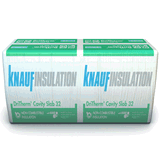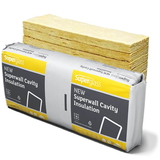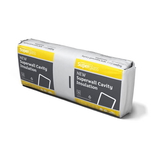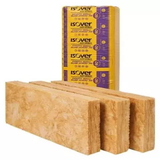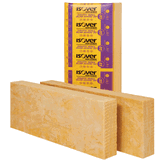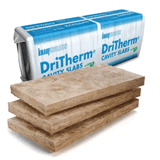- Blogs
- Types of Asbestos Cavity Wall Insulation: A Comprehensive Guide UK
Types of Asbestos Cavity Wall Insulation: A Comprehensive Guide UK
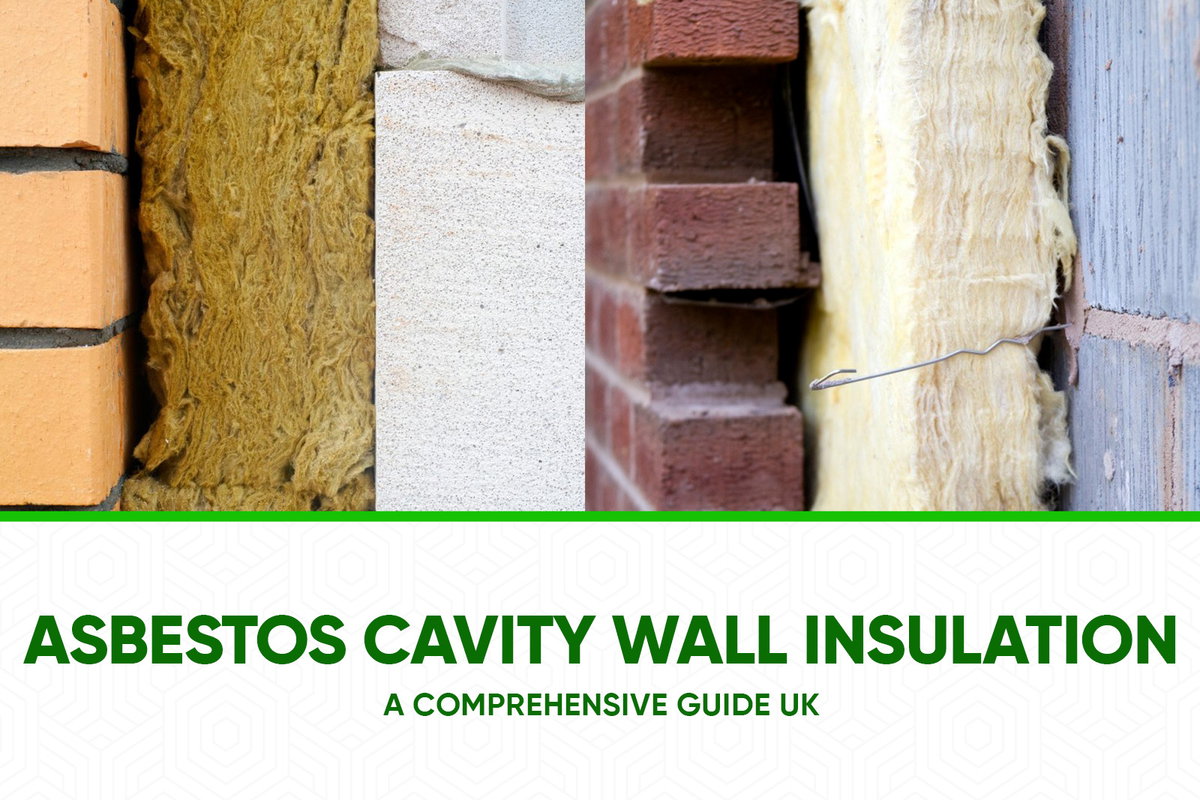
TLDR
Cavity wall insulation (CWI) installed before 2000 in the UK may contain asbestos, most commonly in the form of loose-fill vermiculite. Due to its friable nature, work disturbing loose-fill insulation is designated as licensable work under the Control of Asbestos Regulations 2012 (CAR 2012). The duty to manage asbestos (Regulation 4) applies to all non-domestic premises and the common parts of multi-occupancy domestic premises. Remediation requires a Refurbishment or Demolition Survey carried out by UKAS-accredited professionals, followed by removal solely by HSE-licensed contractors, and disposal as mandatory hazardous waste.
Technical Overview and Regulatory Context
1. The Historical Presence of Asbestos in UK Cavity Wall Insulation
Asbestos was a widely employed material in UK construction throughout the 20th century, valued for a combination of durability, exceptional resistance to fire, and beneficial thermal performance. Its capability to impede heat transfer, a measurement only briefly referenced here, made it an attractive additive in insulation products. Cavity walls represented a readily accessible void that was often retrospectively filled with insulation materials during building upgrades, particularly from the 1930s through to the late 1980s.
The use and importation of asbestos were not curtailed uniformly in the UK. A phased prohibition saw blue asbestos (Crocidolite) and brown asbestos (Amosite) banned from import and use in 1985. However, white asbestos (Chrysotile) continued to be used actively in materials for another 14 years until a full, comprehensive ban on the importation and use of all asbestos-containing materials was finally enacted in November 1999. This definitive pre-2000 cutoff date remains a critical benchmark for all professionals assessing potential asbestos risk in properties across the UK.
The phased nature of the regulatory ban necessitates a nuanced approach to risk assessment for older buildings. Properties constructed or insulated before 1985 carry a higher statistical probability of containing the amphibole forms of asbestos (Crocidolite and Amosite), which are typically considered the most hazardous due to their thin, needle-like fibre structure. Conversely, while a building constructed between 1985 and the 1999 ban is less likely to contain these highly dangerous amphiboles, it may still contain Chrysotile. Professionals must acknowledge this time-dependent variance, as the fibre type can influence the specific management strategy and the perceived urgency of required remediation, even though all asbestos is strictly regulated and presents a serious health risk.
Identification of Materials and Hazard Analysis
2. Specific Materials Used as Asbestos Cavity Wall Insulation
In the context of cavity wall insulation (CWI), the primary material of concern is loose-fill insulation. This refers to light, fluffy materials that were pneumatically blown or poured into enclosed voids, such as wall cavities or lofts. The most pertinent material in this category associated with asbestos contamination in UK buildings is vermiculite.
Vermiculite is a mineral silicate that expands when heated, creating lightweight, highly effective insulating granules. Historically, certain vermiculite sources were contaminated with asbestos fibres during mining and processing. Because of this widespread historical contamination, the professional standard in the UK dictates that older vermiculite insulation must be presumed to contain asbestos fibres unless rigorous testing conclusively proves otherwise.
Where asbestos is identified in insulation, it typically falls into three main types historically used in the UK construction industry :
-
Chrysotile (White Asbestos): The most common type, belonging to the serpentine group. These fibres are generally curved and flexible.
-
Amosite (Brown Asbestos): A common amphibole type. Like Crocidolite, Amosite typically comprises needle-like fibres and was widely used until the 1985 ban.
-
Crocidolite (Blue Asbestos): Also an amphibole, characterised by thin, brittle, needle-like fibres. This type is generally regarded as highly hazardous and was banned early in the UK (1985).
3. The Specific Hazard of Cavity Wall ACMs ![]()
The inherent danger posed by asbestos in CWI stems from the nature of the material itself. Loose-fill insulation is, by definition, highly friable—meaning it can be easily crumbled, powdered, or reduced to dust by hand pressure. Friable materials readily release microscopic asbestos fibres into the air upon any disturbance.
The risk is significantly compounded by the material's concealment. Cavity wall insulation is hidden within the building fabric, making its condition impossible to assess without intrusive measures. Any maintenance activity involving the wall, such as drilling for fixture installation, running new services, or attempts to extract the insulation, constitutes a severe disturbance risk. Such activities can lead to the instantaneous release of high concentrations of harmful airborne fibres, which, when inhaled, are linked to severe health issues including asbestosis, lung cancer, and mesothelioma.
The inherent high risk of this material form is formally recognised in regulatory policy. Because loose-fill insulation is intrinsically friable, the probability of uncontrolled fibre release and exceeding occupational exposure limits during any disturbance is substantial. The regulatory framework addresses this by explicitly pre-classifying any work involving loose-fill insulation as licensable under the Control of Asbestos Regulations 2012. This mandatory operational classification demands that property professionals immediately plan for the highest level of hazard control, requiring the involvement of specialist, licensed contractors and stringent containment protocols should removal or disturbance become necessary.
The Cornerstone of UK Regulation: The Control of Asbestos Regulations 2012 (CAR 2012)
4. The Duty to Manage (Regulation 4)
The legal foundation for asbestos control in the UK is the Control of Asbestos Regulations 2012 (CAR 2012). Regulation 4, known as the 'Duty to Manage,' places a statutory responsibility on the person responsible for the maintenance and repair of a premises (the 'dutyholder') to proactively manage the risk from asbestos.
This duty applies specifically to :
-
All non-domestic premises (e.g., factories, shops, offices).
-
The 'common parts' of multi-occupancy domestic premises (e.g., shared hallways, stairwells, basements, and roof spaces in blocks of flats).
The statutory obligations required of the dutyholder are extensive and non-negotiable :
-
Assessment: Taking reasonable steps to ascertain whether asbestos-containing materials (ACMs) are present, including determining the material's quantity, precise location, and condition.
-
Presumption: Presuming materials contain asbestos unless there is conclusive evidence to demonstrate otherwise.
-
Register: Establishing and maintaining an accurate and up-to-date record (register) of the location and condition of all ACMs and presumed ACMs.
-
Risk Management: Assessing the risk of potential fibre exposure and formulating a written Asbestos Management Plan to control that risk.
-
Monitoring: Implementing the plan, continuously monitoring the condition of the ACMs, and reviewing the management plan at least every 12 months, or sooner if conditions change.
-
Information Sharing: Providing information regarding the location and condition of ACMs to any individual likely to work on or disturb the materials.
Asbestos Cavity Wall Insulation
5. Legal Position in Private Residential Dwellings
It is essential to clarify that the specific Duty to Manage (Regulation 4 of CAR 2012) does not apply to single, private domestic dwellings. However, the absence of this specific regulation does not mean asbestos work is unregulated in private homes.
When work is carried out on a domestic property that may involve disturbing ACMs, the general duties established under the Health and Safety at Work etc. Act 1974 (HSW Act) apply to protect both the workers and the householders. This means that the employer (the contractor) undertaking the work remains subject to several critical operational controls under CAR 2012 :
-
Regulation 11: The duty to prevent or reduce worker exposure to asbestos.
-
Regulation 15: The duty to establish arrangements to deal with accidents, incidents, and emergencies.
-
Regulation 16: The duty to prevent or reduce the spread of asbestos outside the immediate work area.
This regulatory requirement creates an indispensable necessity for preparation. A contractor who is legally obligated to prevent fibre spread (Regulation 16) and limit exposure (Regulation 11) cannot begin any intrusive work, such as CWI inspection or removal, without first knowing if ACMs are present. This procedural requirement effectively obligates the property owner or the contracting firm to commission a thorough asbestos assessment or survey before the work commences. This process ensures the operational controls applied in a private home are functionally equivalent to the identification steps mandated for formal dutyholders, protecting workers regardless of the property classification.
Professional Best Practice: Surveying and Risk Assessment
6. Arranging a Competent Asbestos Survey
The identification of asbestos-containing materials is the first and most critical step in compliance. The only definitive method to confirm whether a suspect material, such as loose-fill CWI, contains asbestos fibres is through obtaining a physical sample and submitting it for specialised analysis.
The integrity of this process hinges entirely on professional competency and accreditation. Sampling procedures must be executed by a suitably trained and competent surveyor. Crucially, the subsequent analysis of the sample must be performed by analysts operating in laboratories accredited by the United Kingdom Accreditation Service (UKAS). UKAS is the sole recognised accreditation body for asbestos inspection and testing in Great Britain.
Where a cavity wall void cannot be fully accessed, sampled, or inspected during a survey (due to inaccessibility or other restrictions), the material within that void must be rigorously presumed to contain asbestos until such time as a proper, definitive inspection can be safely conducted.
7. Differentiating Survey Types for Compliance
The Health and Safety Executive (HSE) specifies two types of asbestos survey, determined by the intended use and planned activities for the premises. Given the concealed and friable nature of CWI, property professionals must accurately select the correct survey type to ensure full legal compliance prior to any building work.
Table: Comparison of Asbestos Survey Requirements (UK)
| Survey Type | Primary Purpose | Methodology and Access |
| Management Survey | Managing ACMs during normal occupation and use; creating the Asbestos Register. | Non-destructive inspection; visual checks and limited intrusion (e.g., behind access hatches). Area typically remains occupied. |
| Refurbishment or Demolition Survey (R&D) | Locating and identifying all ACMs (including hidden ones) that will be disturbed or removed prior to major intrusive construction or demolition work. | Fully destructive inspection; involves intrusive opening up of the building fabric to find concealed materials. Requires the area to be vacated due to potential asbestos disturbance. |
Cavity wall insulation removal, or any intrusive operation that requires opening the wall to take an adequate sample, is classified as a highly disruptive activity akin to a minor demolition or refurbishment. Since CAR 2012 places a legal requirement on dutyholders to remove all ACMs "as far as reasonably practicable" before major refurbishment or demolition , the correct preparatory step for CWI remediation is almost always the comprehensive
Refurbishment or Demolition Survey. This destructive survey is mandatory for locating all hidden ACMs within the wall structure before any removal procedure begins, thereby ensuring the utmost protection for all workers and occupants from the severe risks posed by disturbing loose, friable insulation.
Operational Control Measures and Remediation Procedures
8. Licensable Work and Contractor Requirements ![]()
The level of regulatory control required for asbestos work is determined by the risk of fibre release. Licensable work is defined as work carrying the highest risk, applying where the exposure of workers is not sporadic and of low intensity, or where the risk assessment cannot conclusively demonstrate that the control limit will not be exceeded.
Crucially, HSE guidance explicitly states that work involving any loose fill insulation is automatically categorised as licensable work. This determination is established because the material’s inherently friable nature makes high fibre release probable, meaning the risk cannot reasonably be reduced to the non-licensable short duration or low intensity thresholds applicable to denser, less friable materials like asbestos cement.
This designation mandates that dutyholders and property owners commissioning the removal or remediation of loose-fill CWI must employ specialist contractors who hold a current licence issued by the Health and Safety Executive (HSE). It is a serious offence to perform licensable work without the necessary licence, potentially resulting in prosecution, unlimited fines, and/or imprisonment for serious breaches of the regulations. The regulation's specific focus on loose-fill effectively removes the possibility of non-specialised trades (such as general insulation installers or private individuals) legally removing CWI if ACMs are suspected or confirmed, thereby acting as a vital safety measure to contain environmental and occupational health risks.
9. Mandatory Control Practices During Remediation
Once ACMs are identified in the cavity wall and a licensed contractor is appointed, the remediation process must strictly follow the operational control requirements outlined in CAR 2012:
-
Prevention and Exposure Reduction (Regulation 11): The contractor must employ robust engineering controls, such as establishing negative pressure enclosures and specialised local exhaust ventilation, along with stringent administrative protocols, to minimise the release and dispersal of fibres into the working atmosphere.
-
Spread Control (Regulation 16): Given the high friability of loose-fill CWI, preventing fibre spread is paramount. This requires the establishment of effective physical segregation barriers, airlocks, and decontamination units to ensure asbestos dust cannot migrate outside the contaminated work area, particularly crucial in residential settings.
-
Health Surveillance: Employers engaging in licensable work must ensure all employees involved are placed under regular medical surveillance. Furthermore, employers are legally required to maintain a comprehensive health record for each employee for a period of 40 years after the date of the last entry.
10. Safe and Legal Asbestos Waste Disposal
The disposal of asbestos-containing materials is regulated strictly, regardless of whether the waste originates from commercial or domestic premises. All removed CWI, along with contaminated personal protective equipment (PPE), dust, and rags, must be classified and treated as hazardous waste. This waste must never be mixed with normal household or building refuse.
Mandatory packaging requirements are enforced to prevent fibre release during transportation :
-
Double Wrapping and Labelling: Asbestos waste must be double wrapped using suitable, robust packaging materials. Standard practice involves placing the waste in a red inner bag marked with asbestos warning labels, which is then sealed inside a clear outer bag with appropriate hazard markings.
-
Handling: Intact materials, such as asbestos cement sheets (if found), must not be broken up. Loose, friable materials require extreme caution to minimise disturbance during collection and packaging.
The waste must only be transported to and accepted by a licensed disposal site. Dutyholders or householders requiring removal services should contact their local authority, who can provide information regarding licensed disposal facilities or specialised collection services for hazardous waste.
Conclusion
The presence of asbestos in historical cavity wall insulation presents a significant, concealed compliance and health challenge for property professionals in the UK. The identification of loose-fill materials, particularly vermiculite, triggers the most stringent regulatory requirements, classifying removal work as high-risk and licensable under CAR 2012.
Effective management requires meticulous adherence to the UK regulatory framework, starting with the establishment of the appropriate survey (typically a Refurbishment or Demolition Survey) conducted by a UKAS-accredited organisation. The highest standard of professional competence, supported by an HSE licence, is mandatory for all remediation activities to ensure the statutory duties for exposure prevention and spread control are fully met. Ongoing vigilance and adherence to a continually monitored Asbestos Management Plan are essential to managing this enduring legacy risk in the UK built environment.
UK Legal Disclaimer
This article provides general information concerning historical construction practices and regulatory frameworks applicable within the United Kingdom. This content is for informational purposes only and does not constitute technical, legal, or professional advice.
Readers must not rely on the information contained herein for the specification of materials, the design of work procedures, or the confirmation of compliance status.
Due to the critical health risks associated with asbestos, all suspected or confirmed asbestos-containing materials (ACMs) must be professionally identified, assessed, and managed. Any decision regarding surveying, testing, or remediation must be made by qualified, competent professionals who are appropriately accredited by UKAS (United Kingdom Accreditation Service) and, where required, hold a relevant Health and Safety Executive (HSE) licence.
Before commissioning or undertaking any work that may disturb building materials, independent legal and specialist technical advice must be sought and adhered to rigorously. If there are immediate health concerns regarding exposure to asbestos, guidance should be sought from a GP or NHS 111.

Samuel Hitch
Managing Director
Buy Insulation Online.
Leave A Reply
Your feedback is greatly appreciated, please comment on our content below. Your email address will not be published. Required fields are marked *


